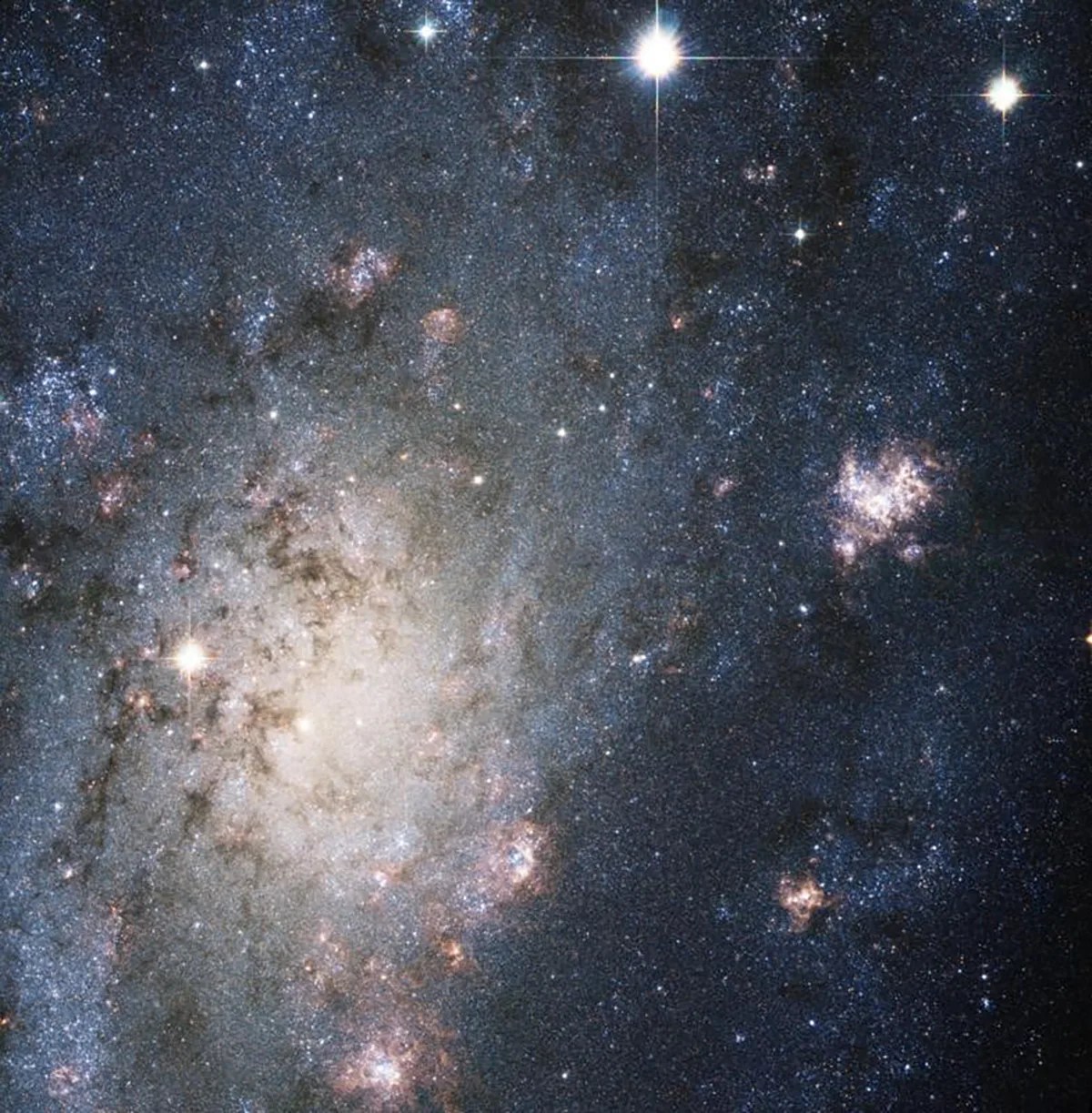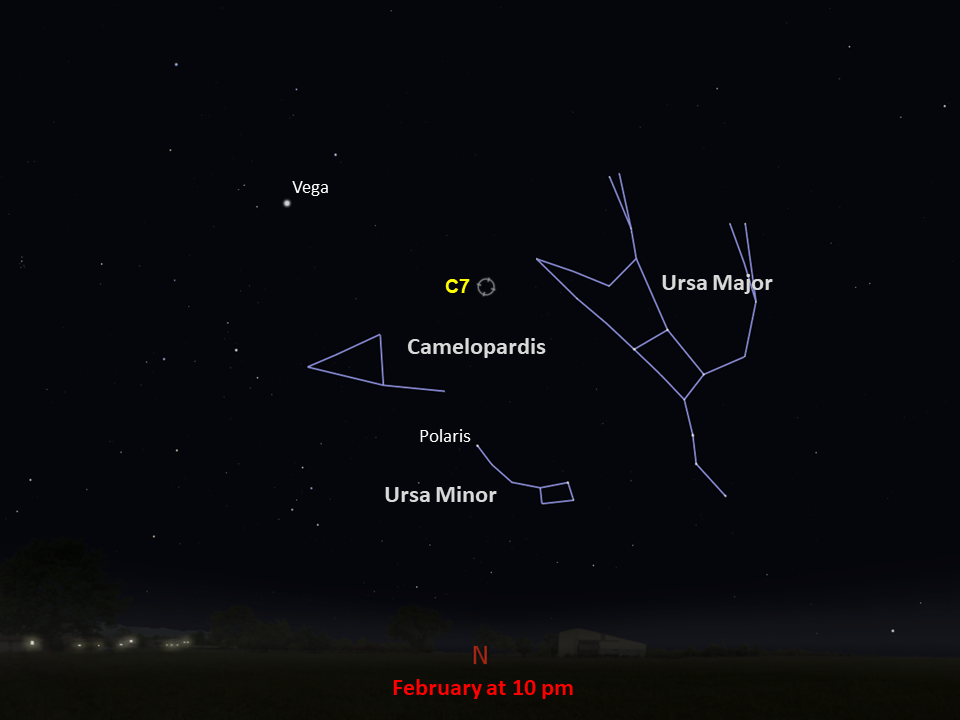Caldwell 7
Supernova hunters may be familiar with Caldwell 7 as the galaxy hosted a supernova in 2004.
Distance
12 million light-years
Apparent Magnitude
8.9
constellation
Camelopardalis
object type
Spiral Galaxy
This hazy, steely blue spiral galaxy mottled with pink, flower-like gaseous regions and granular filaments of dark dust is Caldwell 7 (also called NGC 2403). The galaxy’s pinkish, glowing clouds are the energetic birthplaces of stars known as H II regions. In these vast, hot areas of ionized hydrogen, the charged gas can form thousands of stars over a couple million years, with each hot newborn star emitting ultraviolet light, further ionizing the surrounding hydrogen.
Roughly 80,000 light-years across, this galaxy became well known amongst supernova hunters in 2004 after Caldwell 7 produced the brightest supernova seen in over a decade (and one of the brightest ever recorded). Supernova 2004dj had a magnitude of 11.2 at peak brightness, and appears as the bright star-like object in the upper right corner of this Hubble image.
Two bright stars hovering near the top of this view could be confused with supernovae, but they are actually local Milky Way stars, far closer to us than Caldwell 7 is. The galaxy is over 12 million light-years away from Earth and can best be seen in the Northern Hemisphere during the winter months. Southern Hemisphere observers will need to be near the equator to see it and should look for it in the summer. The galaxy can be found with binoculars or a telescope, appearing as an elongated fuzzy patch within the bounds of the constellation Camelopardalis, and is relatively bright at magnitude 8.9.
Though Caldwell 7 is comparable to many galaxies in Charles Messier’s famed catalog of celestial objects, the French astronomer missed it when compiling his list. The galaxy was instead discovered by German-British astronomer William Herschel in 1788.
This image, which captures the core and some of the spiral arms of Caldwell 7, was taken with Hubble’s Advanced Camera for Surveys on August 17, 2004, two weeks after a Japanese amateur astronomer discovered Supernova 2004dj. In addition to this visible-light image, astronomers have used ultraviolet images and spectroscopic observations from Hubble to further investigate how certain types of stars explode and what kinds of chemical elements they eject into space.
For more information about Hubble’s observations of Caldwell 7, see:
A Bright Supernova in the Nearby Galaxy NGC 2403
Glossary
HII Region - An area with an abundance of ionized atomic hydrogen, where thousands of stars can form over a couple million years.
Ionization - The process by which particles become electrically charged; radiation from various astronomical sources, such as stars, can charge surrounding gases with electromagnetic radiation, causing these clouds of gas to glow.
Magnitude - The brightness of an astronomical object, represented by a number; bright objects have low numbers on the magnitude scale, while dim objects have high numbers.
Spiral Galaxy - A galaxy characterized by its spiral structure, with star-filled arms that extend out from the center of the galaxy and host regions of star formation.
Supernova - The explosion of a massive star at the end its life, which ejects material into space and causes the star to temporarily brighten in our sky.
Explore Hubble's Caldwell Catalog
The following pages contain some of Hubble’s best images of Caldwell objects.
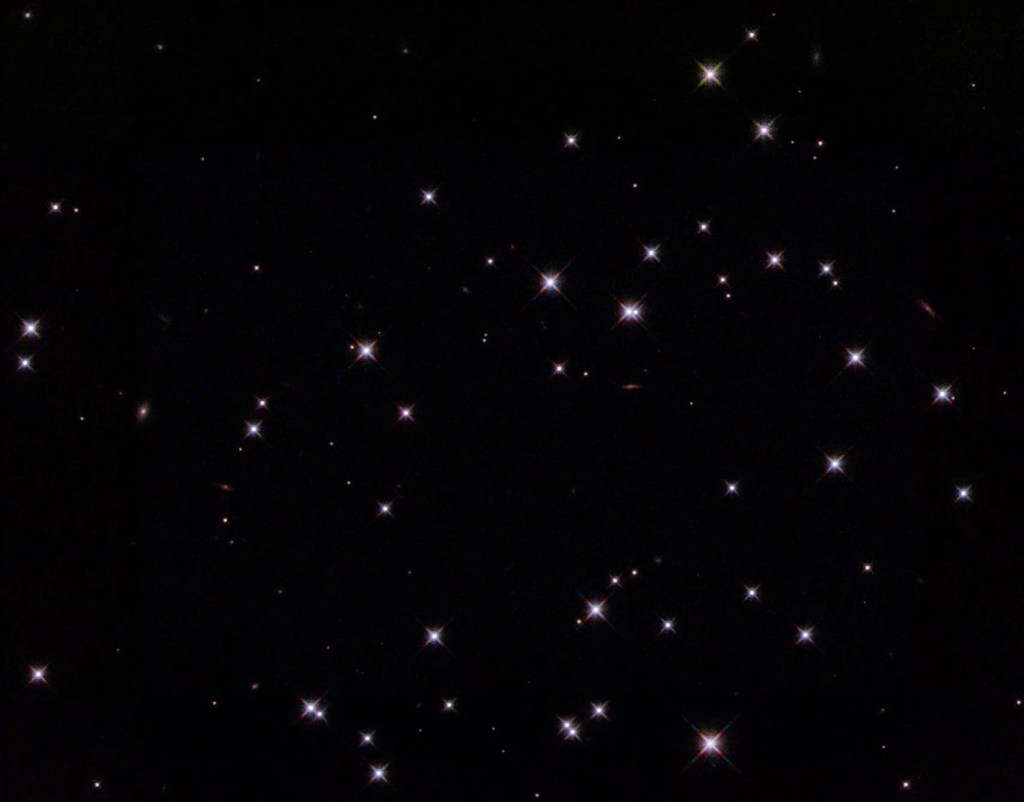
Also known as NGC 188, this group of stars formed from a large cloud of gas making the stars roughly…
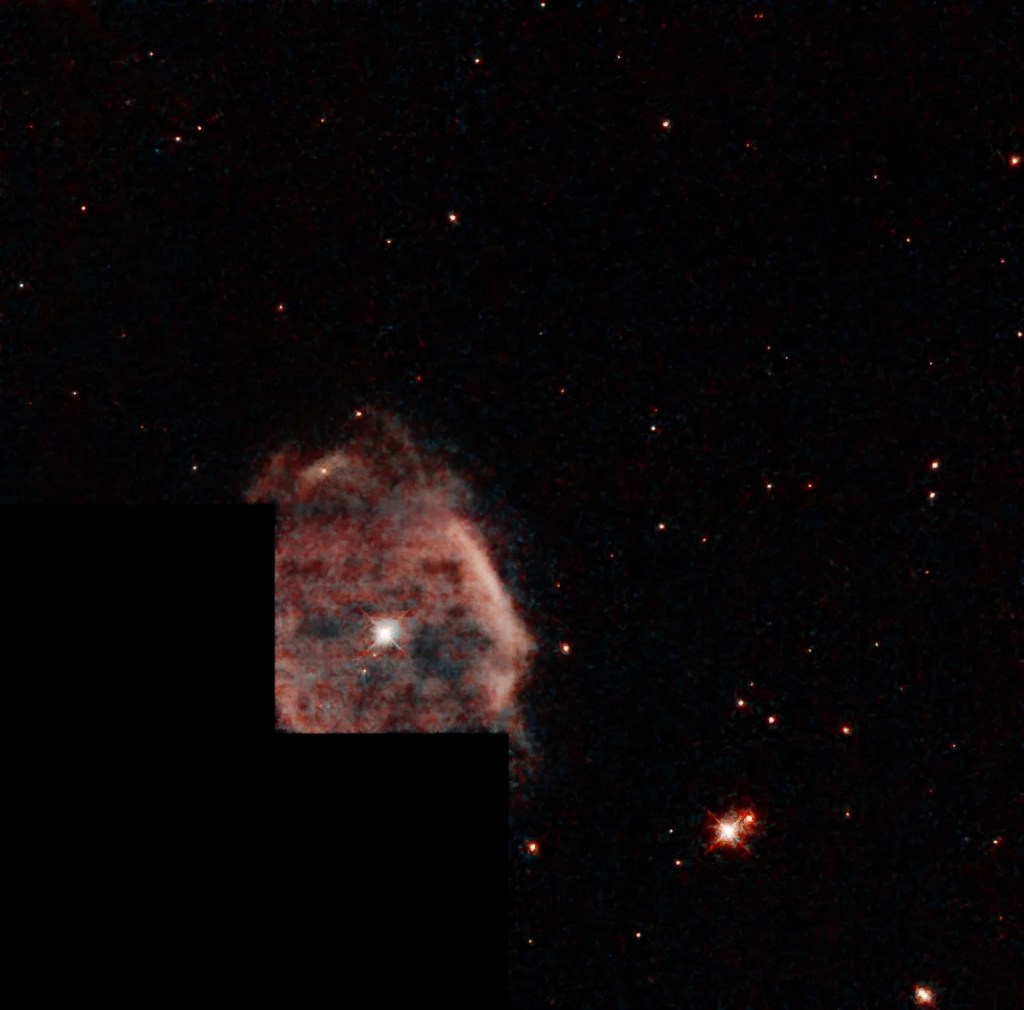
This shell of gas is expanding outward, away from the dying star within.
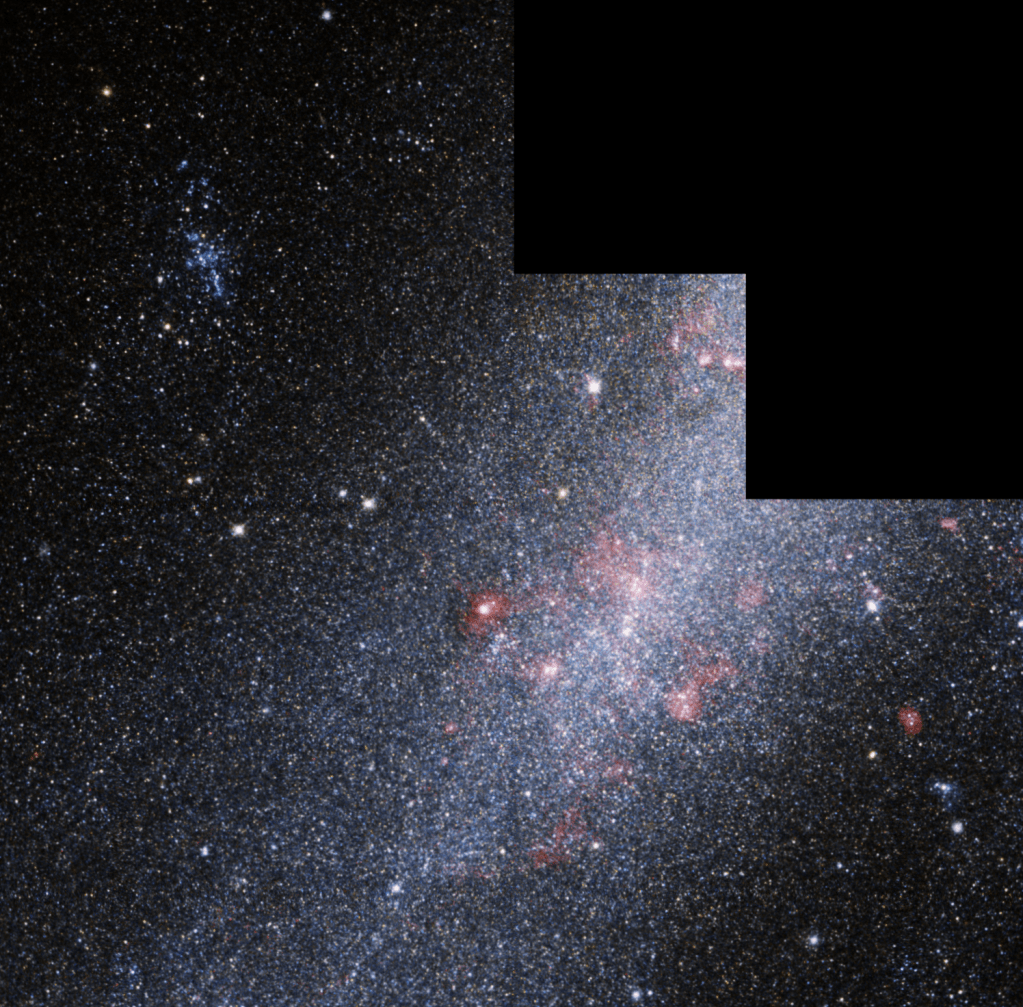
This barred spiral galaxy was first spotted by British astronomer William Herschel in April 1793 in the constellation Draco.




























